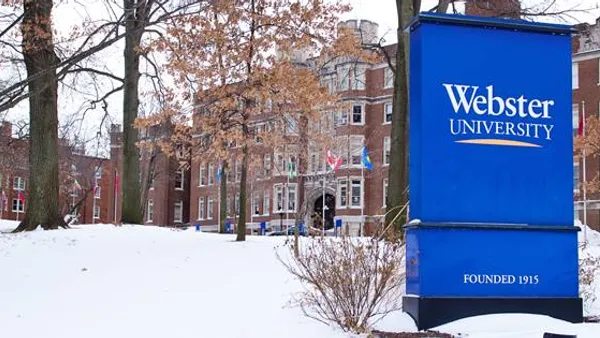Dive Brief:
- The U.S. Department of Education will distribute $5 million in grants to colleges that enroll students from underserved communities to help improve their retention and completion rates.
- Eligible colleges, which include historically Black and minority-serving institutions, “are specifically invited” to use the money to support students close to graduating and to reengage those who may have dropped out temporarily because of the coronavirus pandemic, the Education Department said Thursday.
- Grantees will be eligible for up to $1 million in funding. The department also said it is prioritizing community colleges where enrollment declines during the health crisis have been the most severe.
Dive Insight:
The $5 million is money Congress allocated to the department, Education Secretary Miguel Cardona said during an agency event Thursday that highlighted efforts to improve inclusivity in higher education.
“Years of underinvestment, state budget cuts, and lagging federal support for Pell Grants have shifted costs to students and left you chronically underfunded,” Cardona said, referencing HBCUs, Hispanic-serving institutions and others that serve marginalized populations.
“Too often, our best-resourced schools are chasing rankings that mean little on measures that truly count: college completion, economic mobility, narrowing gaps in access to opportunity,” he said.
Colleges that want to pursue the new grant funding have two months to apply, and should detail their work to promote student retention and completion and “present a high-quality evaluation plan,” the department said.
The agency said it has requested $110 million from Congress to fund more retention and completion grants.
Cardona also announced at the event that the Education Department will extend for three more years an initiative known as Project Success, which attempts to bolster institutional performance and student outcomes at minority-serving institutions. The project was due to sunset next month. It worked to identify risk factors affecting retention and graduation rates.
















